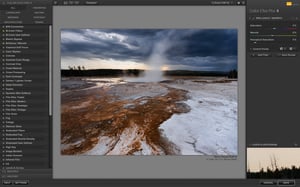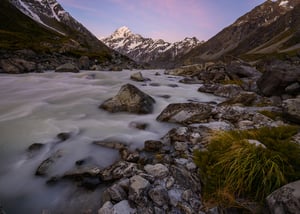If you’re trying to photograph the small world of plants and bugs, you’ll face plenty of challenges along the way. Macro photography is a difficult genre — you’re pushing up against the physical limits of depth of field, diffraction, and motion blur. Naturally, focusing in macro photography isn’t an easy...
Post Archive By Spencer Cox - Page 55
Does Photography Have Any More Technical Limitations?
Something I noticed recently made me stop and think for a moment, since, if true, it means that the modern era of photography is an especially noteworthy time: With very few exceptions, there are no scenes or subjects that are impossible to capture with today’s technology. Nearly everything you come...
Semi-Automatic Camera Modes Explained
It’s common to think that most professional photographers, or all professional photographers, shoot in manual mode, for the simple reason that it offers the greatest possible control over a photo. Why would you leave your camera to make important decisions without your input? However, as valuable as manual mode is,...
Composition Tip: Give Your Subjects Breathing Space
Composition, in general, can seem like a fuzzy concept to many photographers. Trying to frame an image in a way that “works” is not something that is intuitive, even for people who have been taking pictures for years. And, unlike other aspects of photography — focusing, selecting a sharp aperture,...
Backing up Photos in the Back Country
Any photographer who has ever lost some of their photos will tell you how important it is to have a good backup system. For your best photos, you should have three or more copies, located in at least two different physical locations at all times. You absolutely shouldn't have any...
Moonscape Photography Tips
There are some popular conditions for landscape photography that every photographer already knows: sunrise and sunset, storm clouds, fog, and so on. But one that doesn’t get mentioned very often is the light produced by a full moon on a clear night. The subtleties of moonlight aren’t always visible to...
Another Nail in the Coffin of Photography Software
Here's some worrying news: Google just abandoned Nik's software suite — the same Nik suite that it bought five years ago, and the same Nik suite that it started offering for free in March of 2016. What does this mean for the world of photography software? One discontinued product might not seem like...
Minimalism in Photography: The Good and Bad
As people look at photos on smaller and smaller screens, there has been a growing trend towards taking photos that are more and more minimalist. Especially on platforms like Instagram, minimalism is exploding; it’s everywhere, and it has been for a while now. There are some pros and cons of...
Partying with 14mm? Thoughts from an Ultra-Wide Holdout
Five months ago, I bought my first ultra-wide lens — the Nikon 14-24mm f/2.8 — after holding out for years. I’ve always flirted with the idea of such a crazy perspective, but I kept finding reasons not to purchase one myself. A 24mm lens had worked well as my widest...
How to Take Sharp Photos in the Wind
Normally, if you’re using a tripod, camera shake isn’t something you’ll have to worry very much about. However, there are some obvious exceptions. If you’ve ever found yourself taking pictures in heavy winds, you’ll know the difficulties of capturing sharp photos — particularly if you’re using a telephoto lens. This...









